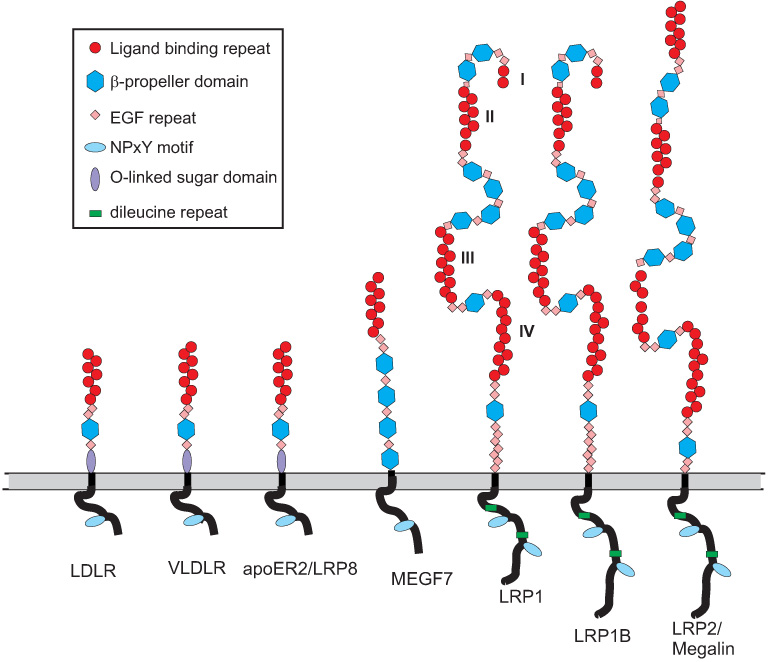How are vitamin D and bran health related? A review on the 
LRP-1 is a large receptor present on the body’s cells and is widely expressed, or present, in several tissues. It’s a member of the LDL receptor family, which plays various different roles related to enzyme activation, the entry of bacterial toxins and viruses into cells, and the metabolism of a proteins that transport and combine with fats in the blood.
“LRP1 is a member of the LDL receptor family, which contains several structurally homologous receptors that are composed of modular structures. This receptor family includes seven family members that are closely related and include the LDL receptor, very low density lipoprotein (VLDL) receptor, apoE receptor 2, multiple epidermal growth factor-like domains 7 (MEGF7), glycoprotein 330 (gp330/megalin/LRP2), LRP1 and LRP1B.” ~ Physiology Review, 2008.

A benefit of LRP-1 is that it has been identified as a Aβ scavenger receptor that can remove Aβ from the brain through the blood-brain barrier. However, its expression is decreased in patients with neurological dysfunction.
This review points to recent evidence that after supplementation with the active form of vitamin D, 1,25-(OH)2D3, LRP1 expression increases significantly both in-vivo and in-vitro. This is because so many vitamin D receptors are expressed in the brain.
Several studies also suggest that vitamin D receptor (VDR, the receptor to which vitamin D binds to in the body) deficiency, or inhibition, could be a risk factor for neurodegenerative disease. This review establishes a strong connection between vitamin D, LRP-1, and their potential Aβ clearance abilities.
- Among Aβ scavenger receptors, low density lipoprotein receptor related protein (LRP-1) has been most extensively studied.
- LRP-1, is highly expressed in neurons and located on abluminal side of the brain capillaries whose expression decreases in Alzheimer’s Disease (AD) patients which give rise to increased cerebral Aβ deposition.
- Recent evidences reveal that post 1,25-(OH)2D3 treatment, LRP1 expression increases significantly for both in-vivo and in-vitro studies, since Vitamin D receptors (VDR) are broadly expressed in brain.
- Biological actions of Vitamin D are mediated via its nuclear hormone receptor VDR and is found to regulate many genes.
- Several lines of evidence suggest that VDR deficiency/inhibition can be a potential risk factor for AD and sufficient Vitamin D supplementation is beneficial to prevent AD onset/pathology or slow down the progression of disease.
Conclusion/ The present review establishes a strong correlation between Vitamin D and LRP-1 and their possible involvement in Aβ clearance and thereby emerging as new therapeutic target.
Sources:
Patel P, Shah J. Role of Vitamin D in Amyloid clearance via LRP-1 upregulation in Alzheimer’s disease: A potential therapeutic target? J Chem Neuroanat. 2017 Nov;85:36-42. doi: 10.1016/j.jchemneu.2017.06.007.
Lillis AP, Van Duyn LB, Murphy-Ullrich JE, Strickland DK. LDL receptor-related protein 1: unique tissue-specific functions revealed by selective gene knockout studies. Physiol Rev. 2008;88(3):887–918. doi:10.1152/physrev.00033.2007
Cantorna MT, Zhu Y, Froicu M, Wittke A. Vitamin D status, 1,25-dihydroxyvitamin D3, and the immune system. Am J Clin Nutr. 2004 Dec;80(6 Suppl):1717S-20S. doi: 10.1093/ajcn/80.6.1717S.





